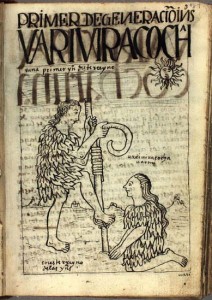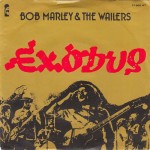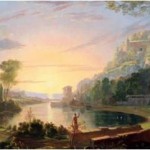The journal article is to the monograph what the short story is to the novel. In less than twenty pages, the scholar should frame a broader picture. I have a penchant for anecdote. I like a good story. Polished prose is also a must. But so is inspired reading and research; as Emerson reminds us, there is “creative reading as well as creative writing.” The worthwhile article, invariably theoretical, helps us turn a corner in our thinking. In lesser cases, these breakthroughs amount to academic gamesmanship. (We have read __ this way, but thanks to my theoretical miracle solvent, we now see __ as __ .) The most meaningful essays hook to concerns beyond scholarly debate. They are what the Quakers call “spirit led.” They renew our faith in what literary study can do.
Most of the articles on my list come from the 1990s, so you can probably guess my age. The focus on a broader landscape also leaves less room for grainier scholarship–work like textual editing, translation and micro-archival advances that happen to define my own research. But here’s what I have for now, alphabetically, in no order of preference:
- Hugh Amory. “The Trout and the Milk:” An Ethnobibliographical Talk.” Harvard Library Bulletin 7 (1996): 50-65.
- Nina Baym. “Melodramas of Beset Manhood: How Theories of American Fiction Exclude Women Authors.” American Quarterly 33:2 (Summer 1981): 123-39.
- William Cronon. “A Place for Stories: Nature, History and Narrative.” Journal of American History 78:4 (March 1992): 1347-76.
- Minrose Gwin. “Space Travel: The Connective Politics of Feminist Reading.” Signs 21:4 (Summer 1996): 870-905.
- Annette Kolodny. “Letting Go Our Grand Obsessions: Notes Toward a New Literary History of the American Front
 iers.” American Literature 64:1 (March 1992): 1-18.
iers.” American Literature 64:1 (March 1992): 1-18. - Perry Miller. “From Edwards to Emerson.” New England Quarterly 8 (Dec. 1940): 589-617.
- Susan Scott Parrish. “Rummaging/in and out of Holds.” American Literary History 22.2 (March 2010): 289-301. Jointly published in Early American Literature 45:2 (Spring 2010): 261-74.
- Mary Louise Pratt. “Arts of the Contact Zone.” Profession (1991): 33-40.
- Adrienne Rich. “Vesuvius at Home.” Parnassus 5:1 (1976). http://parnassusreview.com/archives/416
- Kenneth Roemer. “Nightway Questions American Literature.” American Literature 66:4 (Dec. 1994): 817-29.
- Eric Slauter. “History, Literature and the Atlantic World.” William & Mary Quarterly 3d Ser. 65:1 (Jan. 2008): 135-66. Jointly published in Early American Literature 43:1 (2008).
- Michael Warner. “New English Sodom.” American Literature 64:1 (March 1992): 19-47.
After assembling my list, I asked friends for their favorites. (Most of my friends are also in their late forties.) Several of their picks are now mine as well. But my Top Ten is already Twelve.
- Benedict Anderson. “Exodus,” Critical Inquiry 20:2 (Winter 1994): 314-327.

- Lauren Berlant. “The Queen of America Goes to Washington City.” American Literature 65:3 (Sept. 1993): 549-74.
- Joanna Brooks, “Six Hymns by Samson Occom,” Early American Literature 38:1 (2003): 67-87.
- Michael Clark. “The Subject of the Text in Early American Literature.” Early American Literature 20:2 (Fall 1985): 120-30.
- Jay Fliegelman. “Anthologizing the Situation of American Literature.” American Literature 65:2 (June 1993): 334-38.
- Stephen Greenblatt. “Invisible Bullets: Renaissance Authority and Its Subversion.” Glyph 8 (1981): 41-61.
- Philip Gura. “The Study of Colonial American Literature, 1966-1987: A Vade Mecum.” William and Mary Quarterly 3d Series 45:2 (1988): 305-41.
- June Howard. “What is Sentimentality?” American Literary History 11:1 (1999): 63-81.
- Nicholas Hudson. “From ‘Nation to “Race’: The Origin of Racial Classification in Eighteenth-Century Thought.” Eighteenth-Century Studies 29:3 (Spring 1996): 247-264.
- Amy Kaplan. “Manifest Domesticity.” American Literature 70:3 (Sept. 1998): 581-606.
- Franco Moretti. “Graphs, Maps, and Trees: Abstract Models for Literary History–1.” New Left Review 24 (Nov./Dec. 2003): 67-93.
- Susan Scott Parrish. “Richard Ligon and the Atlantic Science of Commonwealths.” William and Mary Quarterly 3d Series 67:2 (April 2010): 209-48.
- Geoffrey Sanborn. “Whence Came You, Queequeg.” American Literature 77:2 (June 2005): 227-57.
- Wendy Anne Warren. “The Cause of Her Grief: The Rape of a Slave in Early New England.” Journal of American History 93.4 (March 2007): 1031-49.
- Ed White and Michael J. Drexler. “The Theory Gap.” American Literary History 22.2 (Summer 2010): 480-494. Jointly published in Early American Literature 45:2 (Spring 2010): 333-363.
Got a favorite? Let me know.

